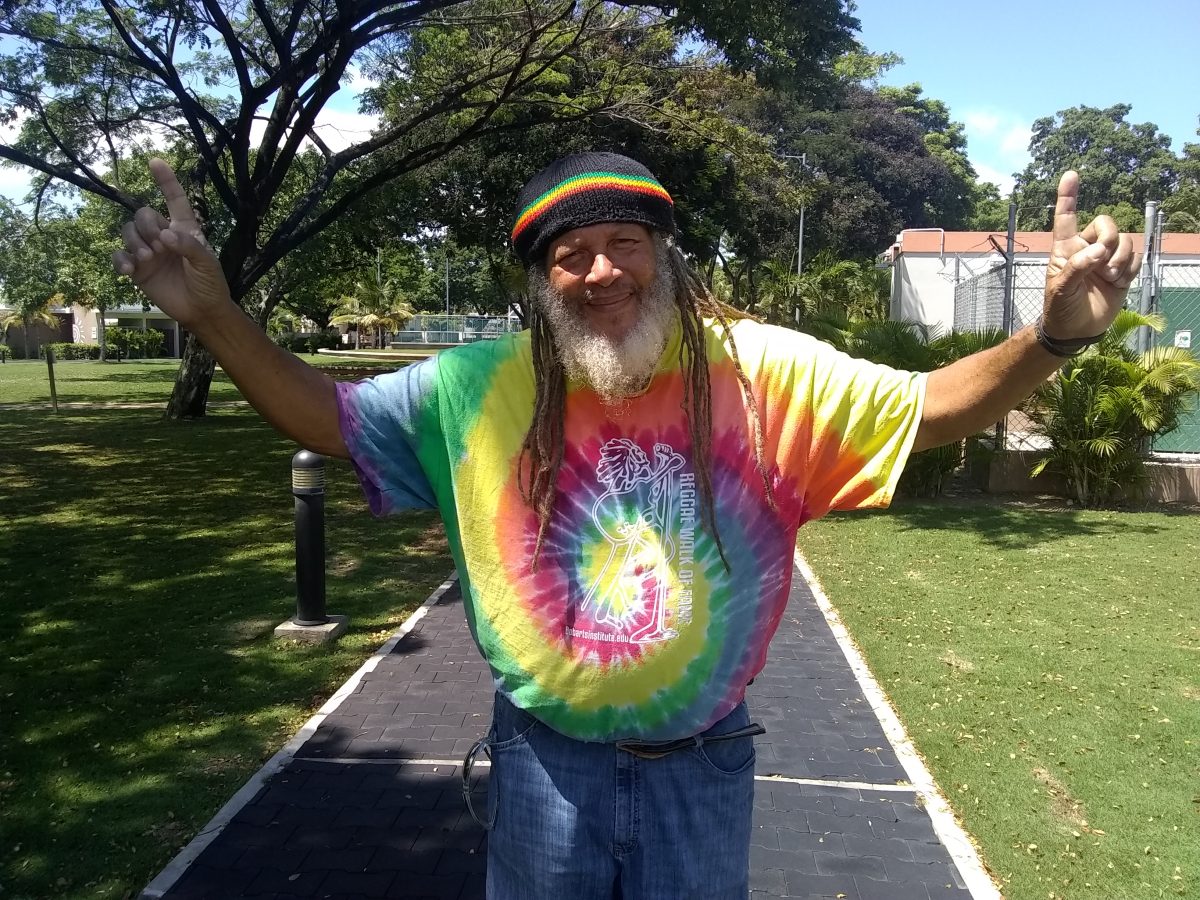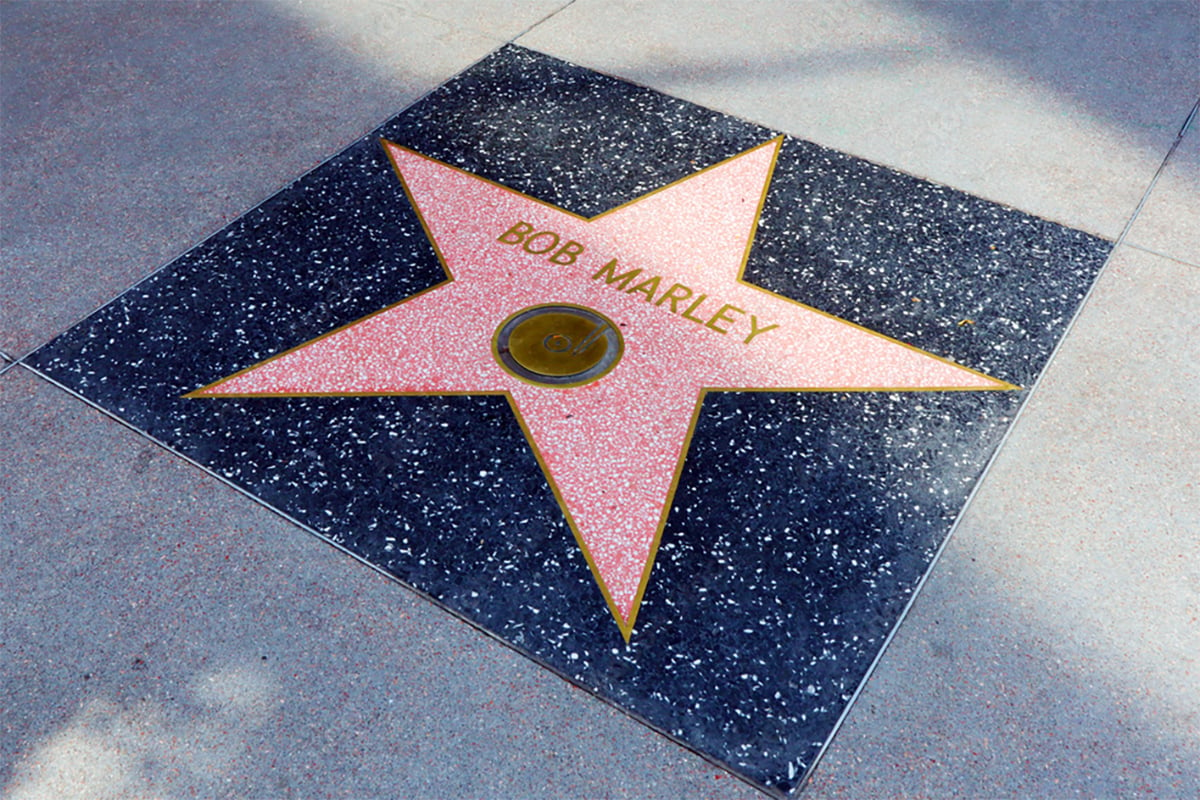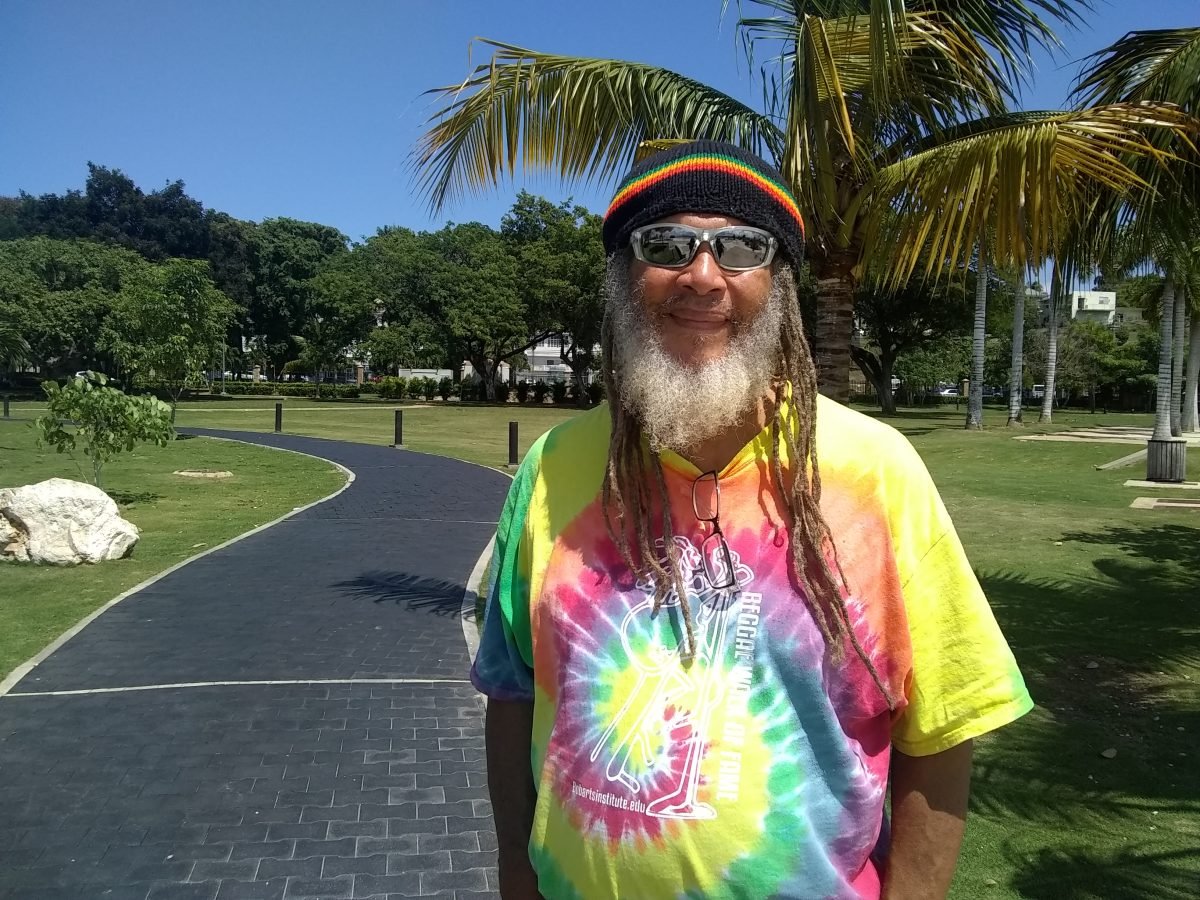Ras Astor Black’s ‘Reggae Walk Of Fame’ Closer To Getting Permanent Home

Montego Bay businessman and music producer Ras Astor Black says his many years of struggle to find a permanent home for the Reggae Walk of Fame, which he conceptualized almost three decades ago, seems headed to become a reality, at long last.
In an interview with DancehallMag, Ras Astor explained that after being barred from establishing the Reggae Walk of Fame at the Falmouth Cruise Shipping Pier, and after being denied the opportunity to continue Reggae music activities at the Trelawny Multipurpose Stadium, he nevertheless remained optimistic that his plan for Jamaica’s indigenous music would come to fruition this time, in Montego Bay, the home of Reggae Sumfest.
“Right now we are looking at three different places… I put a proposal to the Urban Development Corporation for the establishment of the Reggae Walk of Fame at the Harmony Beach Park in Montego Bay on the Jimmy Cliff Boulevard, and it looks really promising. Everyone that I speak to about it, say that’s the perfect thing for that park, because it will bring visitors to the venue, which is not very far from the two cruise shipping ports: Falmouth and Montego Bay,” Ras Astor explained.
“We expect that with the number of hotels in the resort area, and Montego Bay having two Reggae months – July and February, it will draw more people to come, if the Reggae Walk of Fame is placed on the Harmony Beach Park,” he added.
Ras Astor, in explaining the tenets of the Reggae Walk of Fame, said that it would have some elements of the Hollywood Walk of Fame, the historic landmark in Hollywood, California, where more than 2,700 stars bearing the names of actors, directors, producers, musicians, theatrical/musical groups and fictional characters, are embedded in the sidewalks along several streets, as a means of celebrating their accomplishments.
“The Reggae Walk of Fame, just like the Hollywood Walk of Fame in California, would be where you recognise and give credit to the ambassadors of Reggae music, our indigenous music of Rastafari. Because what they have done for Jamaica over the years in general, they should be credited for it. In the history books their names will be mentioned and stay alive. So that is what the Reggae Walk of fame is: recognising the ambassadors of our indigenous music,” he emphasized.
“The Walk of Fame is a walk where you can go to different interactive storyboards, and you can scan the storyboards which take you into the website for the individual artiste. And that was always the concept: where you have something to drive their information – their storyboards will drive people to their website where they can purchase music, merchandise and purchase concert tickets, so the artiste will make more money. Each artiste will be recognised and be listed on our website, so you click on the website, and you scan their storyboards along the Walk of Fame,” he elaborated.
Ras Astor said that the first induction of artists to the Reggae Walk of Fame took place more than a decade ago where Third World, Barrington Levy, King Yellowman, Tony Rebel, Joseph “Culture” Hill and Ziggy Marley’s names were inducted. Other inductees include Toots Hibbert, Bunny Wailer, The I-Threes and Ky-Mani Marley.
In outlining why his stint at the Trelawny Multipurpose Stadium, which had also included the establishment of the Bob Arts Interactive Music and Arts Learning Institute, came to an abrupt end, and his being barred from the Falmouth Cruise Shipping Pier, Ras Astor said the functionaries who took these actions had provided no official explanation.
“At first, before the Falmouth pier was developed, I had an agreement with Caribbean Cruise Lines to have it on the port itself. Royal Caribbean signed off on it, but because it is a joint venture between Royal Caribbean and Port Authority of Jamaica (PAJ), both organisations had to agree. So even though Royal Caribbean agreed for it to be at the Port, the PAJ turned down that proposal before the port opened,” he told DancehallMag.
“So I wrote to Independence Park which manages the Trelawny Multipurpose Stadium and also the National Stadium, and they agreed for it to be there. It took us three and a half years to get an attraction license for the Trelawny stadium, and we did one show there that had 450 people, who came to watch a daytime show called Reggae in the Sun at the stadium which was billed to be the home of The Reggae Walk of Fame,” he added.
After executing that show, Ras Astor said that he was informed that directives were given that he should “not be allowed to do any more shows in the stadium.” According to him, the functionary who had given the instructions had done so, “not knowing that it was his buses that transported the 450 people from the Falmouth Port to the Trelawny Multipurpose Stadium”.
“He was shocked, and I asked why he did it and he did not give a good answer,” Ras Astor recounted.
Astor said that following a change in political administration, it was agreed that the Reggae Walk of Fame would in fact be established at the Trelawny stadium, but by that time the facility, which has been deemed a “white elephant” by many Jamaicans, had fallen into disrepair and had been heavily vandalised.
“But by this time, even though we got the attractions license, whenever representatives came from the Tourist Board to inspect the venue, it was never certified appropriate for visitors to come because it was run down,” he said.
“Bathroom fixtures were all stolen; the light fixtures, everything was falling apart. And, as for the driveway to enter the stadium, the tour drivers wouldn’t really drive their vehicles on it to get there. So we cooled out. We gave it a break and now we are looking for a venue to make the Reggae Walk of Fame be given to the world,” he explained.
With his sights set on the Harmony Beach Park, Ras Astor Black, nevertheless, has no qualms about the fact that the Reggae Walk of Fame will turn the tide for the Montego Bay-based venue, which happens to be busy only on holidays and weekends, by attracting tourists and other Reggae enthusiasts.
“I did one show (in Falmouth) to attract tourists and 450 people cane out – one show. So we know when two ships are in harbour we will get twice the amount because they are only here for four to six hours and then they depart. Plus the guided tours will be in the daytime. So all the shops in the park, right now would benefit from a Reggae Walk of Fame, because when people come to Jamaica they come for Reggae and the sun, sea and sand,” he said.


